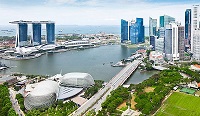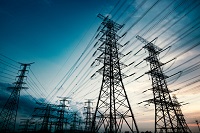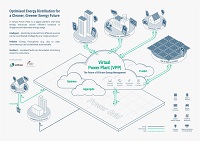Speeches
31 Oct 2018
Excellencies
Distinguished Guests
Ladies and Gentlemen
Welcome
- Good morning and a very warm welcome to the sixth edition of the Gas Asia Summit.
- The theme for this year’s Singapore International Energy Week is “Transforming Energy: Invest, Innovate, Integrate”. Natural gas, as many of you would agree, is the significant fuel for the energy transition and transformation towards a cleaner and more sustainable energy future.
- A growing global population and affluence centred in Asia, is not only demanding more energy, but energy that is affordable, reliable and sustainable. Natural gas is recognised as the cleanest fossil fuel in terms of environmental emissions, and this is driving the transition towards more flexible and interconnected gas supply systems to meet the growing global energy demand.
- Asia-Pacific LNG demand is expected to remain strong in the near to medium term, driven mainly by Southeast Asia, China, South Korea and Taiwan. Within Asia, LNG imports is expected to grow by about 50% from 2017, to almost 250 million tonnes per annum (mtpa) in 2025.
- In East Asia region, political commitment in China, South Korea and Taiwan to push ahead with pro-gas policies, is expected to increase the share of natural gas in their energy mix. In Japan, the use of coal, nuclear and renewables for power generation may moderate overall LNG imports into the East Asian region.
- In Southeast Asia, countries such as Thailand, Singapore, Philippines, Indonesia and Vietnam are expected to increase LNG usage for power generation by means of small scale LNG projects to support electrification initiatives in remote areas. LNG demand in the Southeast Asia region is projected to grow to 35 mtpa in 2025, and to 74 mtpa in 2035.
- On the supply side, new LNG projects such as from the United States and Russia are scheduled to come on-stream over the next few years and the global LNG supply could grow by more than 15% from 2017 to approximately 400 mtpa by 2022. Earlier this month, the US$40 billion LNG Canada project has taken final investment decision. This is by far the largest energy investment in Canada. Targeted for completion before 2025, this project is expected to initially export 14 mtpa of LNG. However, additional new export projects are needed to meet projected global LNG demand and suppliers see the market potentially flipping to under-supply from 2022 onwards.
- The on-going US-China trade disputes will have an impact on LNG market dynamics. Given the 10% import tax imposed on US LNG into China, LNG portfolio traders are likely to optimise by diverting US cargoes away from China. There will also be keener competition between LNG buyers for non-US LNG supplies.
- The increase in oil prices over the past year has translated to more term LNG contracts with oil-indexed pricing formulas, with the most recent deal consummated between PetroChina and Qatargas in September 2018 for up to 3.4 million tonnes per annum supply to 2040.
- With market uncertainties, buyers today prefer shorter term contracts with greater flexibility in contract durations, volumes and destinations. This is facilitated by portfolio traders who can help to bridge the gap between buyers’ expectations for shorter term supplies to manage contracting risk, and sellers’ needs for long term commitment to underpin project investments. Spot LNG trades has corresponding grown substantially to 28% of global LNG trades in 2017, compared to just 2% in 20006. Spot and short-term LNG trades are expected to remain a major part of the LNG market, with new supplies expected to be more flexible moving forward.
- Singapore is strategically located at the heart of the Asian trade routes, close to traditional LNG demand centres as well as emerging markets in the Asia Pacific region. Furthermore, the Singapore LNG (SLNG) terminal at Jurong Island is ideally located along the Straits of Malacca and the South China Sea, where more than 50% of global LNG flows through annually. This makes the SLNG terminal ideal for providing storage and reload and bulk-breaking services to serve regional LNG demand nodes. With the completion of the fourth and largest LNG storage tank this year, the SLNG terminal is well poised to support and grow LNG trading activities in Singapore to serve the Asia Pacific region. In July this year, SLNG signed a Storage and Reload agreement with Trafigura for 24 months. This is in addition to the Storage and Reload agreement signed with Pavilion Gas last year.
- Besides the SLNG terminal, Singapore has also developed a comprehensive and trusted ecosystem of LNG-related services and infrastructure solution providers based here in Singapore. We now have a pool of more than 45 international firms involved in LNG trading and business development. This is expected to grow as we continue to enhance our pro-enterprise policies and work closely with our industry partners and their counterparts to expand their presence in Singapore.
- The most highly anticipated growth area for LNG trading is in the marine sector, driven by the International Maritime Organisation’s regulation to reduce global sulphur limit for marine fuel from the current 3.5% to 0.5% in 2020. To meet this requirement, LNG bunkering is projected to reach between 20 and 30 million tonnes per annum by 2030. The Maritime Port Authority of Singapore has in December 2017 injected in total 12 million Singapore dollars of funding for building LNG-fuelled vessels and LNG bunker vessels slated for delivery in 2020.
- The secondary jetty at the SLNG terminal is scheduled to complete modification works by early next year to receive smaller vessels sized between 2,000 to 10,000m3. Depending on how demand pans out, a third jetty can be developed at the terminal to better support local LNG bunkering initiatives as well as small-scale LNG opportunities in the region.
- The Energy Market Authority and SLNG will continue to work closely with other government agencies and industry partners to strengthen Singapore’s value proposition as an LNG hub and better serve the needs of market players and energy users in Singapore and in the region. I would like to encourage all of you to leverage on Singapore’s unique position to grow your gas-related businesses.
- To conclude, the global gas market remains highly dynamic. Amidst the uncertainties and challenges, policy-makers, gas market players as well as services and infrastructure solution providers must all work together and be open to innovation as we continue our journey towards a more secure, competitive and sustainable energy future.
- I wish all of you a fruitful and productive time in this year’s Gas Asia Summit. Thank you.
Global Developments
Implications of Emerging Trends
Singapore’s Unique Position to Facilitate LNG Trading
Conclusion















